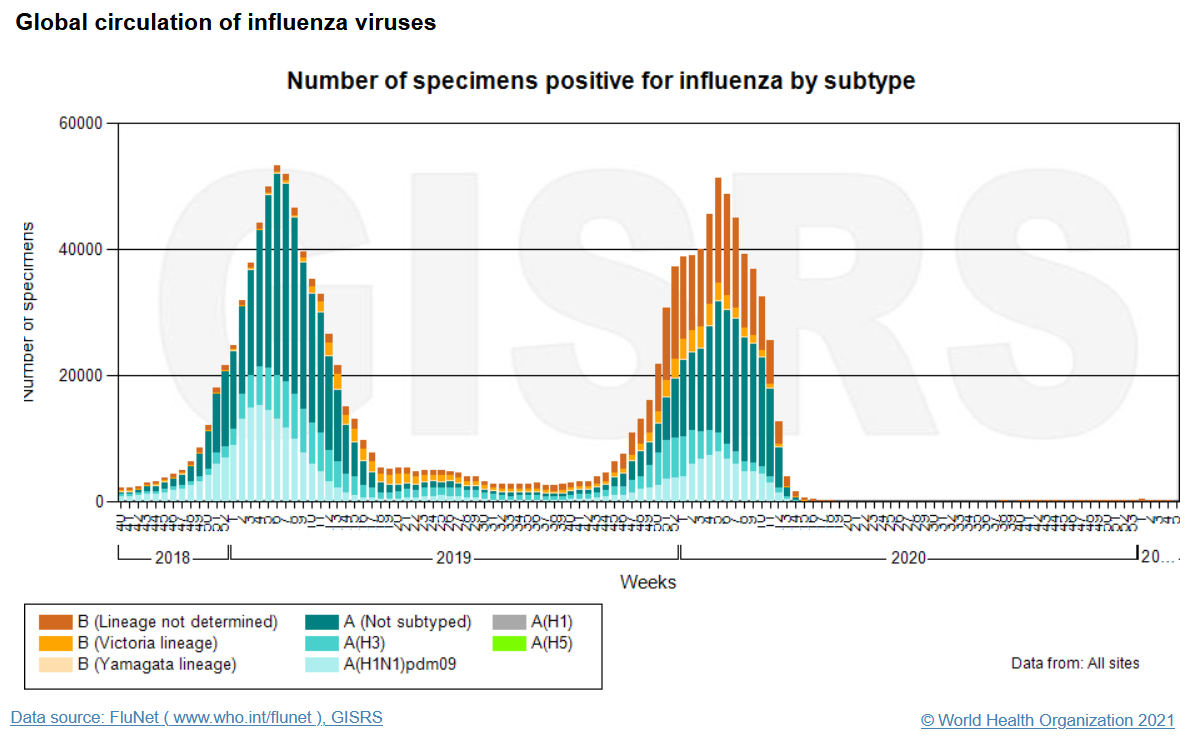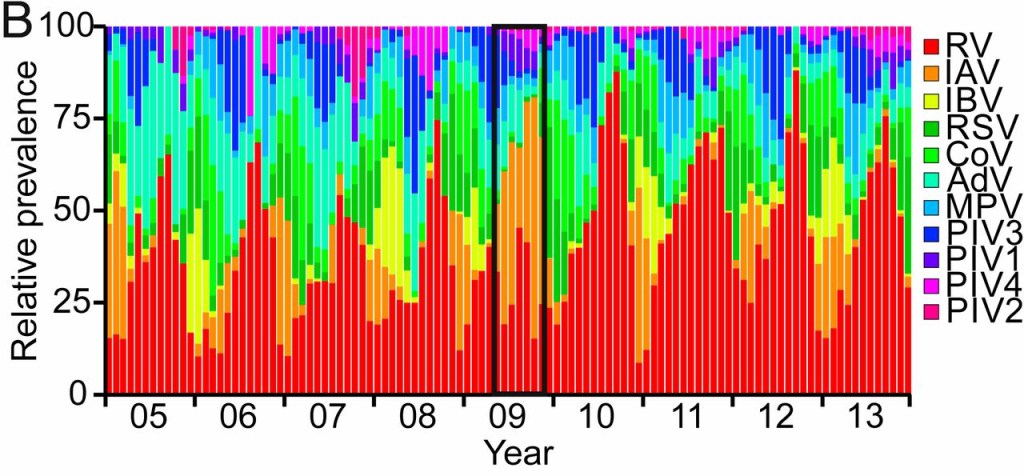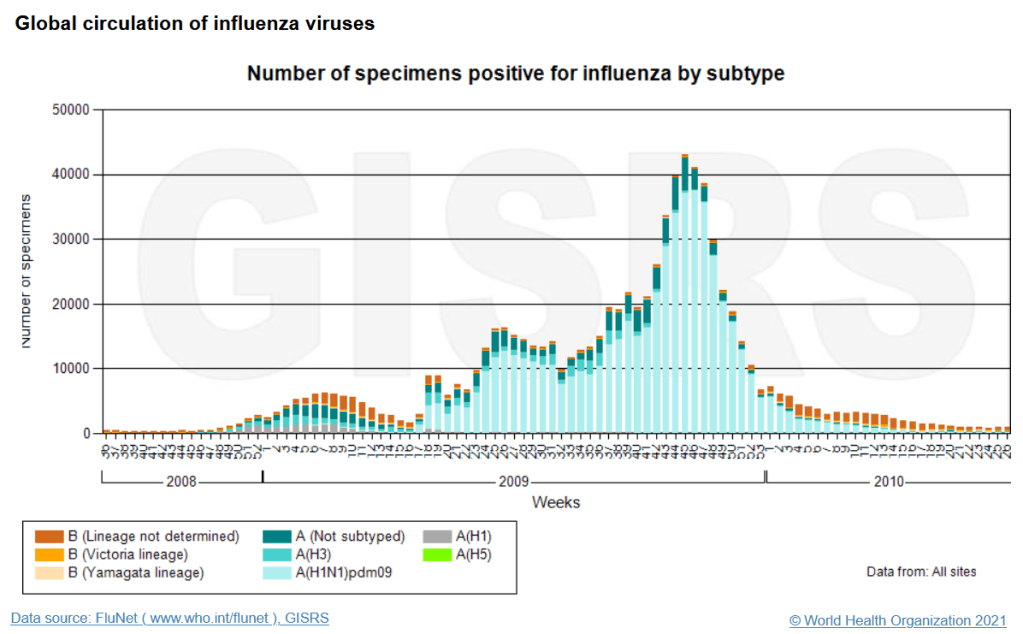Why the Flu Has ‘Disappeared’

All Global Research articles can be read in 27 languages by activating the “Translate Website” drop down menu on the top banner of our home page (Desktop version).
***
Why has the flu disappeared since the beginning of the coronavirus pandemic?
In 2020, after the global coronavirus pandemic began, influenza viruses mysteriously disappeared from global circulation (see WHO FluNet chart below). Some skeptics suspected that influenza was simply reclassified as covid, while many journalists and ‘fact checkers’ claimed influenza was suppressed by face masks and lockdowns.

Global circulation of influenza viruses, 2018-2021 (WHO FluNet)
But influenza has not been reclassified as covid, and influenza viruses have disappeared even in countries without face masks and lockdowns, while they had not disappeared during previous flu epidemics and pandemics, despite face masks, school closures, and other measures.
Instead, influenza viruses have simply been displaced by the more infectious novel coronavirus. This displacement effect is well known from previous influenza pandemics: the 1918 flu virus was displaced by the 1957 flu virus, which in turn was displaced by the 1968 flu virus (see chart). The 2009 swine flu virus temporarily displaced previous flu viruses, but eventually couldn’t assert itself (see chart). And even during the current coronavirus pandemic, more transmissible virus strains have repeatedly displaced previous coronavirus strains, often within weeks.
The last coronavirus pandemic is thought to have occurred in the 1890s (“Russian flu”), which is why a coronavirus displacing influenza viruses was not seen for more than a century. It is well known, however, that influenza vaccinations do not reduce the overall incidence of influenza-like illnesses, as influenza viruses simply get replaced by other respiratory viruses, including coronaviruses.
But why do countries with little or no covid – most of them are islands – also have no influenza? Because they closed their borders early. If the coronavirus doesn’t get in, influenza viruses – which normally oscillate between the northern and southern hemispheres – won’t get in, either.
An interesting and open question is whether the novel coronavirus might permanently suppress some or all of the existing influenza virus strains. This might, at last, be a positive development.
Additional figures
1) Competition between various respiratory viruses
Temporal patterns of seasonal respiratory viral infections in Glasgow (UK). Red: rhinoviruses, orange and yellow: influenza viruses; light green: coronaviruses.
Temporal patterns of viral respiratory infections (Nickbaksh et al, 2019)
2) The 2009 swine flu virus (almost) displacing other flu viruses
3) Timeline of pandemic influenza viruses
Timeline of pandemic influenza viruses (Nickol, 2019)
*
Note to readers: please click the share buttons above or below. Forward this article to your email lists. Crosspost on your blog site, internet forums. etc.




